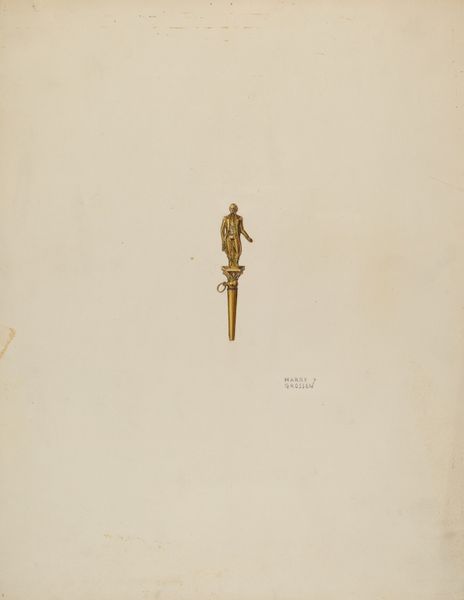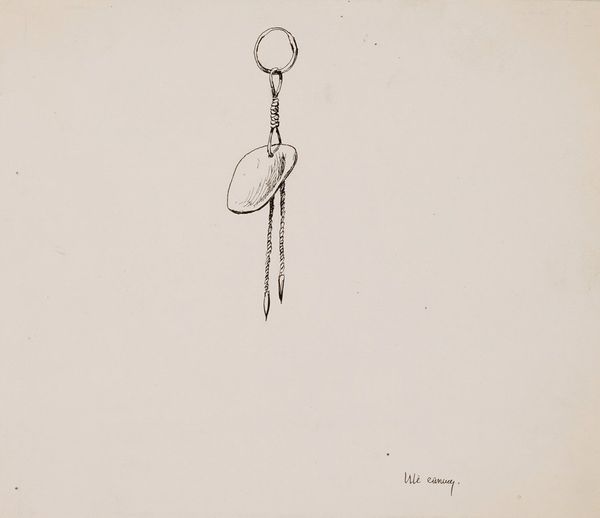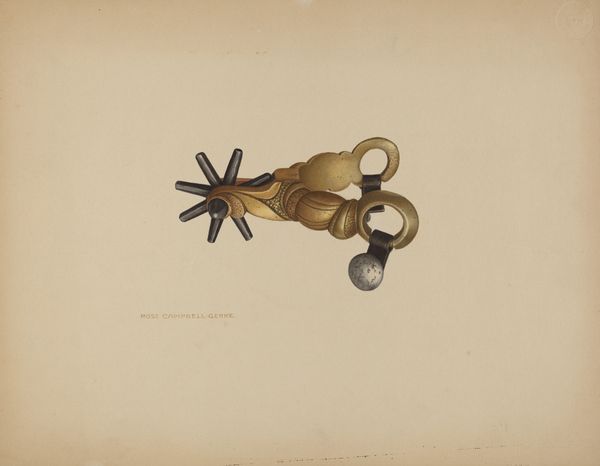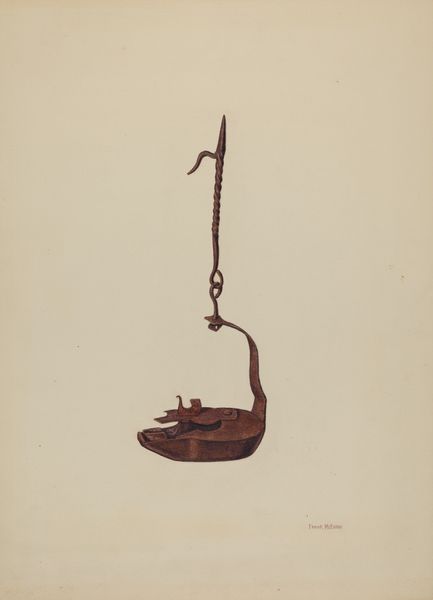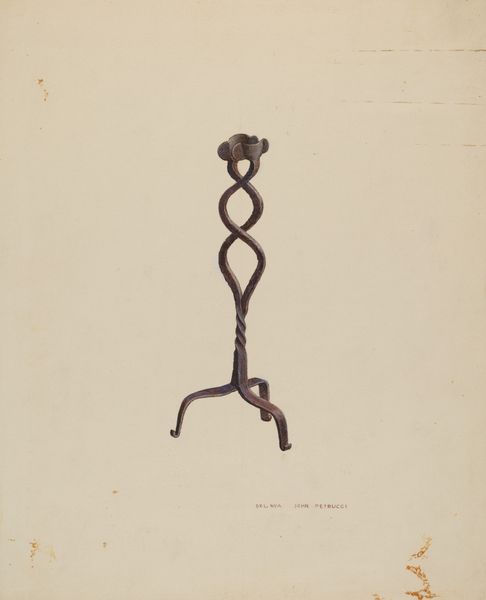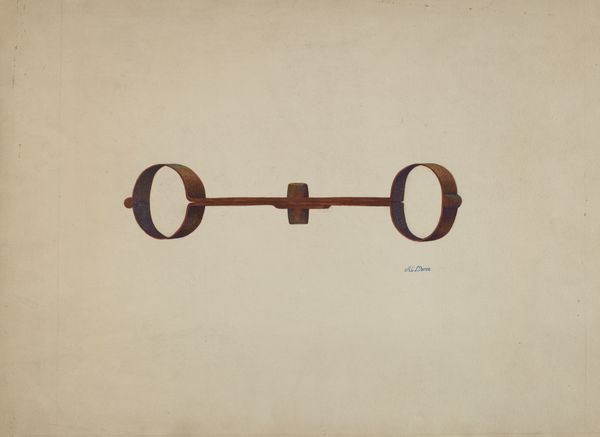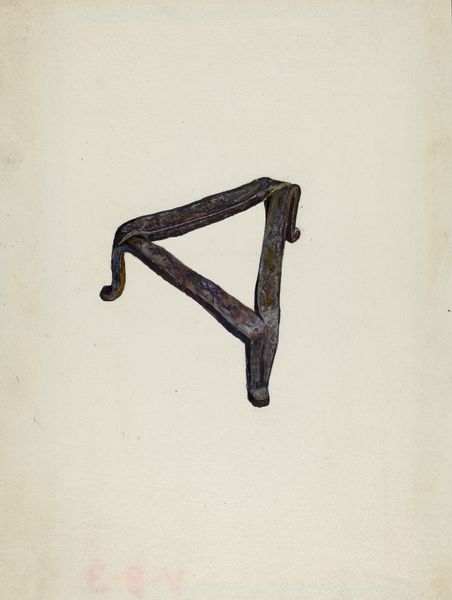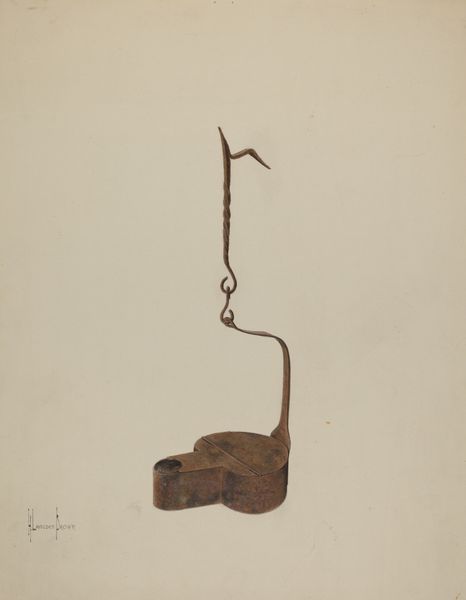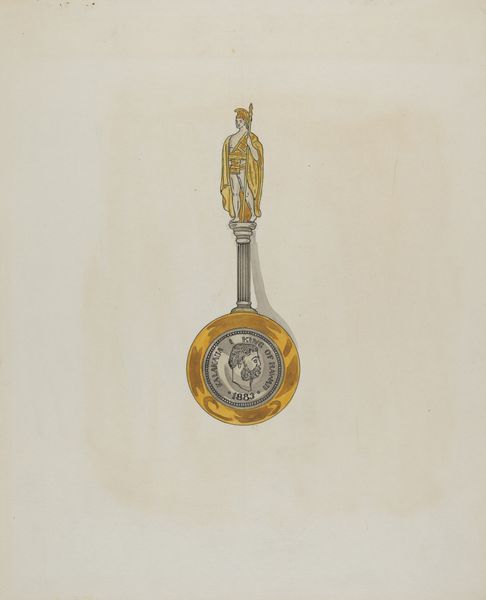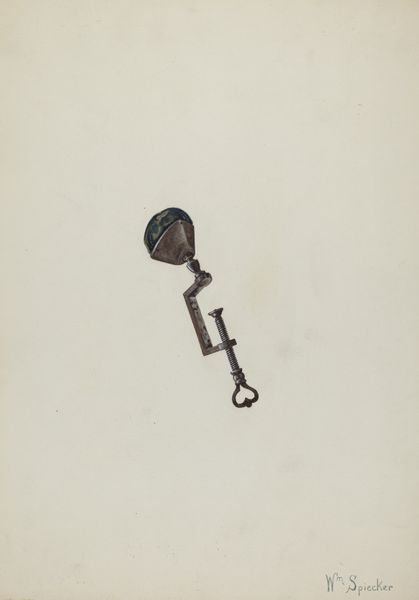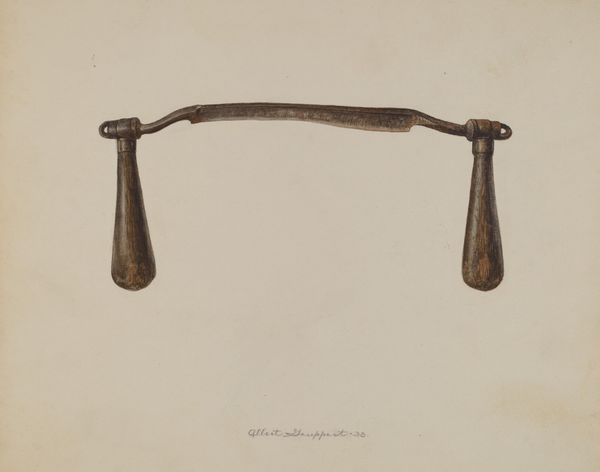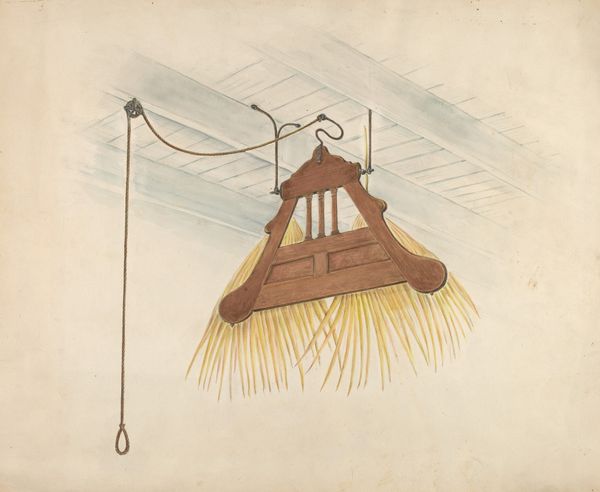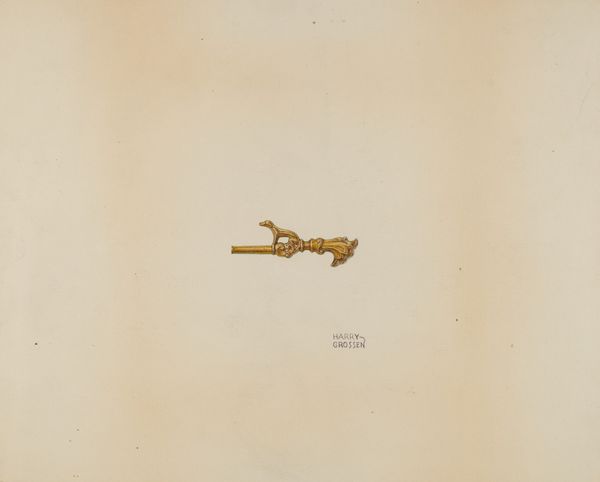
drawing, pencil
#
pencil drawn
#
drawing
#
pencil sketch
#
pencil drawing
#
pencil
#
realism
Dimensions: overall: 20.2 x 25.3 cm (7 15/16 x 9 15/16 in.)
Copyright: National Gallery of Art: CC0 1.0
Curator: Here we have Emil Warns' "Skirt Hook," a pencil drawing created around 1940. Editor: It’s quite stark, isn’t it? The meticulous rendering of a mundane object somehow makes it feel monumental, almost sculptural. Curator: I agree. The choice of pencil as the medium highlights the industrial process—the graphite itself being a key component in various manufacturing contexts. It underscores the intersection of the handmade and the mass-produced. Editor: And thinking about the time period, the 1940s… a piece of clothing hardware becomes a potent symbol. Garments and fashion were being radically reshaped during World War II as women entered the workforce. Even the smallest elements like this hook would have adapted. Curator: Precisely! It also prompts us to consider the labor involved in the garment industry. This small metal piece represents a whole network of labor from the metal worker to the seamstress. How often do we reflect on such a common artifact? Editor: Never, probably! And its purpose is subtly gendered. The "skirt hook" speaks volumes about femininity, functionality, and even restriction. The hook’s clasp represents control, literally holding fabric together. Curator: Indeed, and Warns presents it so directly, with an almost forensic approach. The lack of ornamentation emphasizes its utilitarian purpose and design. It asks us to reflect upon this aspect of a garment, to examine the materials used in everyday life. Editor: Right, a single, functional item rendered with a hyper-realistic almost documentary style asks broader questions about design, gender, and manufacturing. It becomes almost anthropomorphic. Curator: It really shifts our perspective, doesn't it? Showing the complexity embedded in the mundane. Editor: Exactly, something so modest can suggest bigger implications about clothing, work, and women's evolving roles. Thank you, Emil Warns, for making us notice what’s usually hidden in plain sight.
Comments
No comments
Be the first to comment and join the conversation on the ultimate creative platform.
